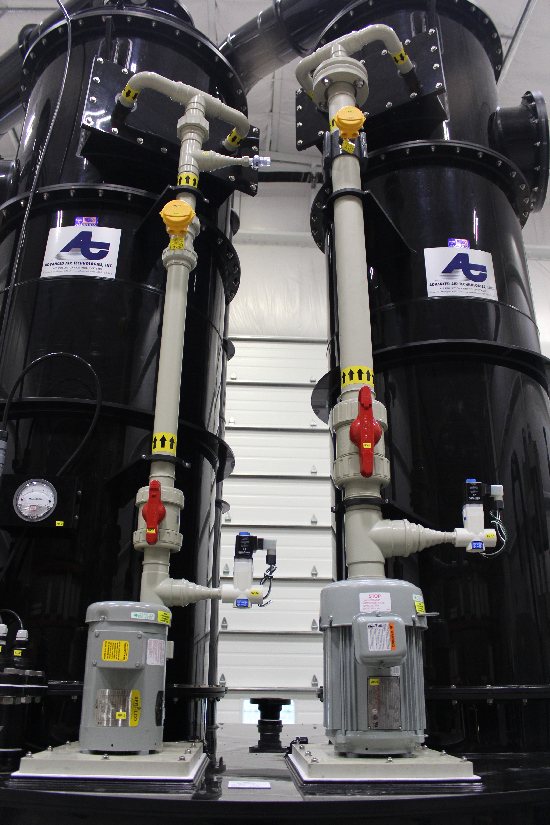Wet scrubbers include any device for removing contaminants or impurities from a gas stream using water. This may be motivated by process or environmental reasons. In the domain of air pollution control, the gas stream handled by wet scrubbers is always air mixed with a regulated pollutant that must be separated, usually at a high efficiency, before exhausting to atmosphere. AAT considers all factors of operation and installation in order to select the optimum design. We offer a complete range of services, consisting of engineering and design, instrumentation and controls, skid-mounting of equipment, installation, chemical storage tanks and metering pumps, wastewater pretreatment, and start-up. Wet scrubbers are used to remove water-soluble gases and vapors, as well as particulates and aerosols. Gases are scrubbed by the process of diffusion constrained by vapor-liquid equilibrium. Particulates are scrubbed by the mechanical processes of impaction and interception, which are dependant on the size and speed of the particles relative to the size and speed of a target, such as a water droplet or wetted surface. Often, gases that are rather insoluble in water may still be reduced using a wet scrubber by adding chemicals to the water to react with the insoluble gas, converting it to a component with greater solubility. This process is known as chemical reaction assisted gas absorption. Wet scrubbers used to carry out this process are simply called “chemical scrubbers.” Regardless of the application, the gas and water streams must be brought into intimate turbulent contact with one another. AAT, Inc. incorporates a variety of contacting methods, including random and structured packed beds, sieve trays, water jets, venturis, spray chambers, and fine bubble diffusion.




